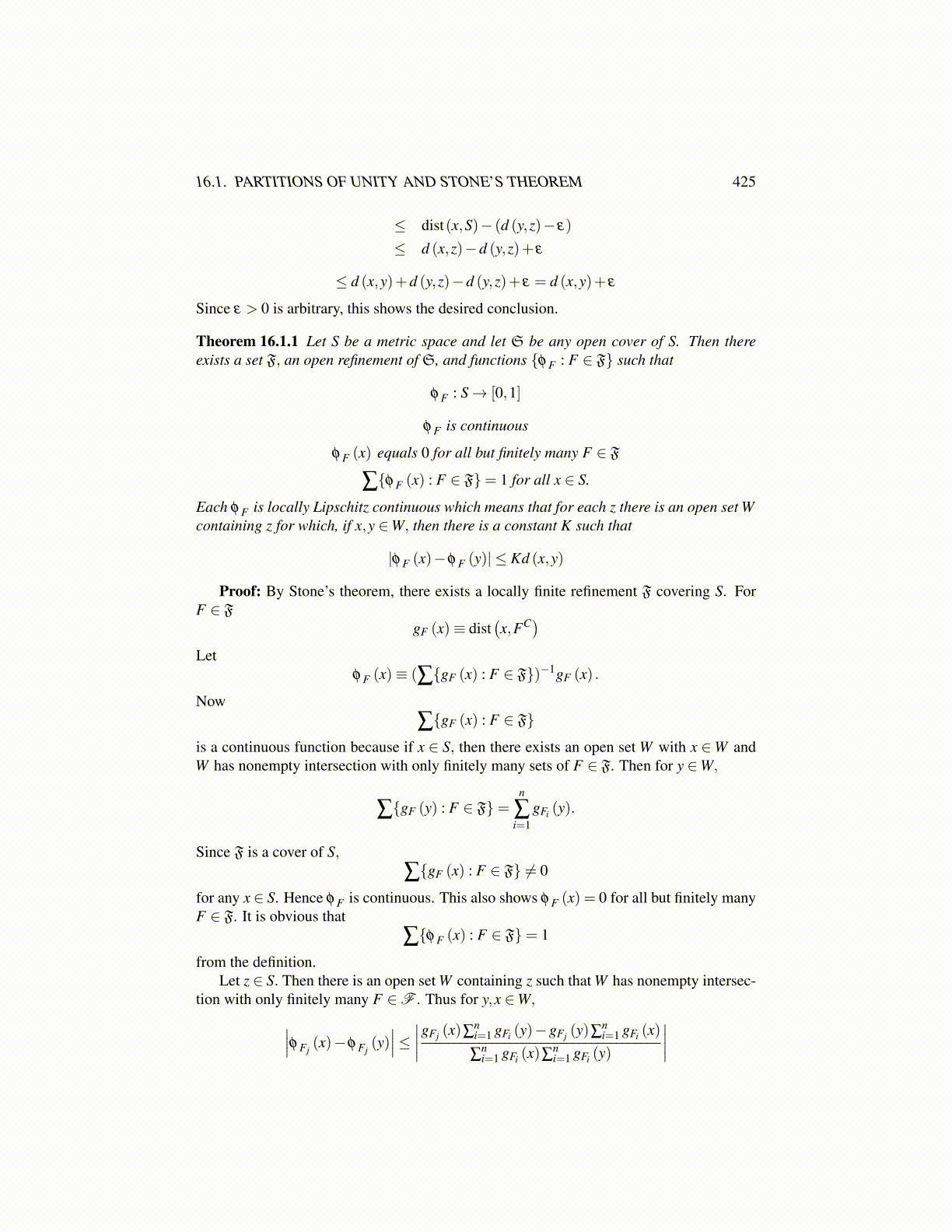
16.1. PARTITIONS OF UNITY AND STONE’S THEOREM 425
≤ dist(x,S)− (d (y,z)− ε)
≤ d (x,z)−d (y,z)+ ε
≤ d (x,y)+d (y,z)−d (y,z)+ ε = d (x,y)+ ε
Since ε > 0 is arbitrary, this shows the desired conclusion.
Theorem 16.1.1 Let S be a metric space and let S be any open cover of S. Then thereexists a set F, an open refinement of S, and functions {φ F : F ∈ F} such that
φ F : S→ [0,1]
φ F is continuous
φ F (x) equals 0 for all but finitely many F ∈ F
∑{φ F (x) : F ∈ F}= 1 for all x ∈ S.
Each φ F is locally Lipschitz continuous which means that for each z there is an open set Wcontaining z for which, if x,y ∈W, then there is a constant K such that
|φ F (x)−φ F (y)| ≤ Kd (x,y)
Proof: By Stone’s theorem, there exists a locally finite refinement F covering S. ForF ∈ F
gF (x)≡ dist(x,FC)
Letφ F (x)≡ (∑{gF (x) : F ∈ F})−1gF (x) .
Now∑{gF (x) : F ∈ F}
is a continuous function because if x ∈ S, then there exists an open set W with x ∈W andW has nonempty intersection with only finitely many sets of F ∈ F. Then for y ∈W,
∑{gF (y) : F ∈ F}=n
∑i=1
gFi (y).
Since F is a cover of S,∑{gF (x) : F ∈ F} ̸= 0
for any x ∈ S. Hence φ F is continuous. This also shows φ F (x) = 0 for all but finitely manyF ∈ F. It is obvious that
∑{φ F (x) : F ∈ F}= 1
from the definition.Let z ∈ S. Then there is an open set W containing z such that W has nonempty intersec-
tion with only finitely many F ∈F . Thus for y,x ∈W,∣∣∣φ Fj(x)−φ Fj
(y)∣∣∣≤ ∣∣∣∣gFj (x)∑
ni=1 gFi (y)−gFj (y)∑
ni=1 gFi (x)
∑ni=1 gFi (x)∑
ni=1 gFi (y)
∣∣∣∣